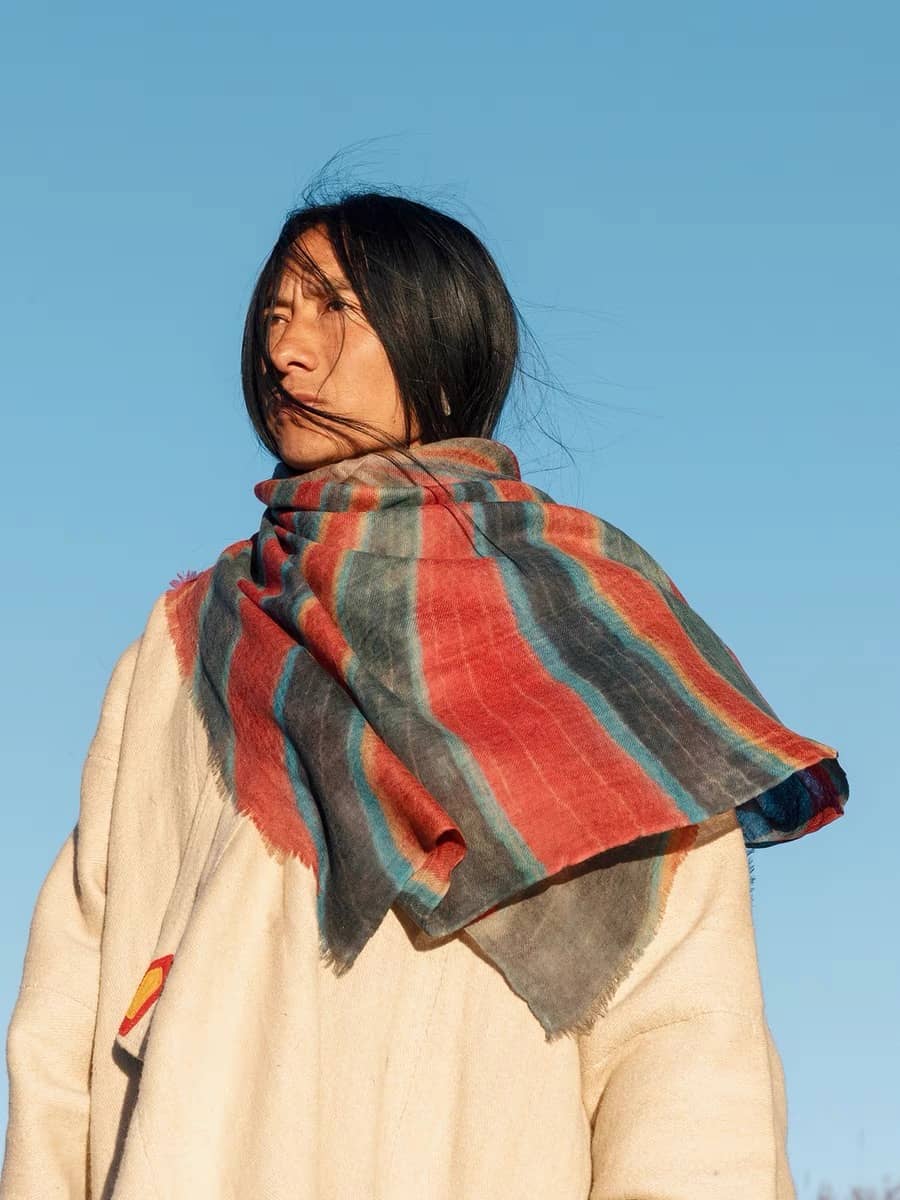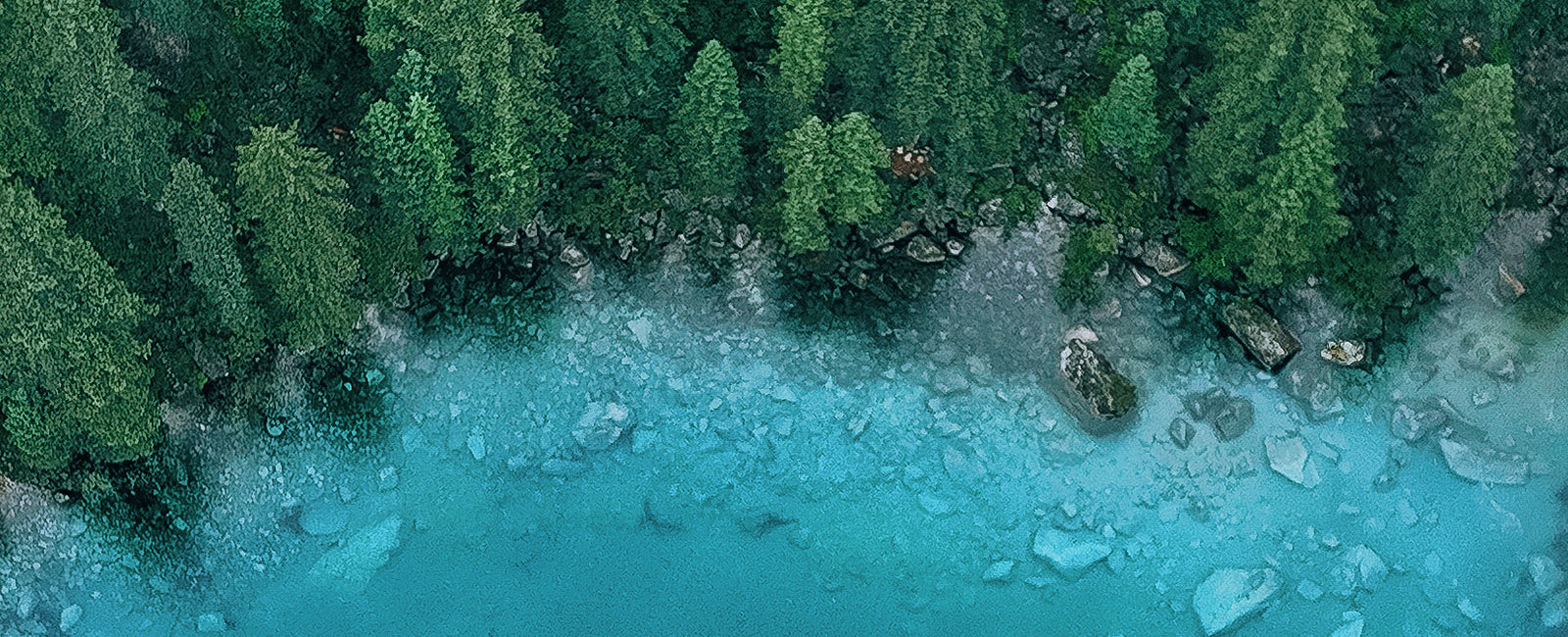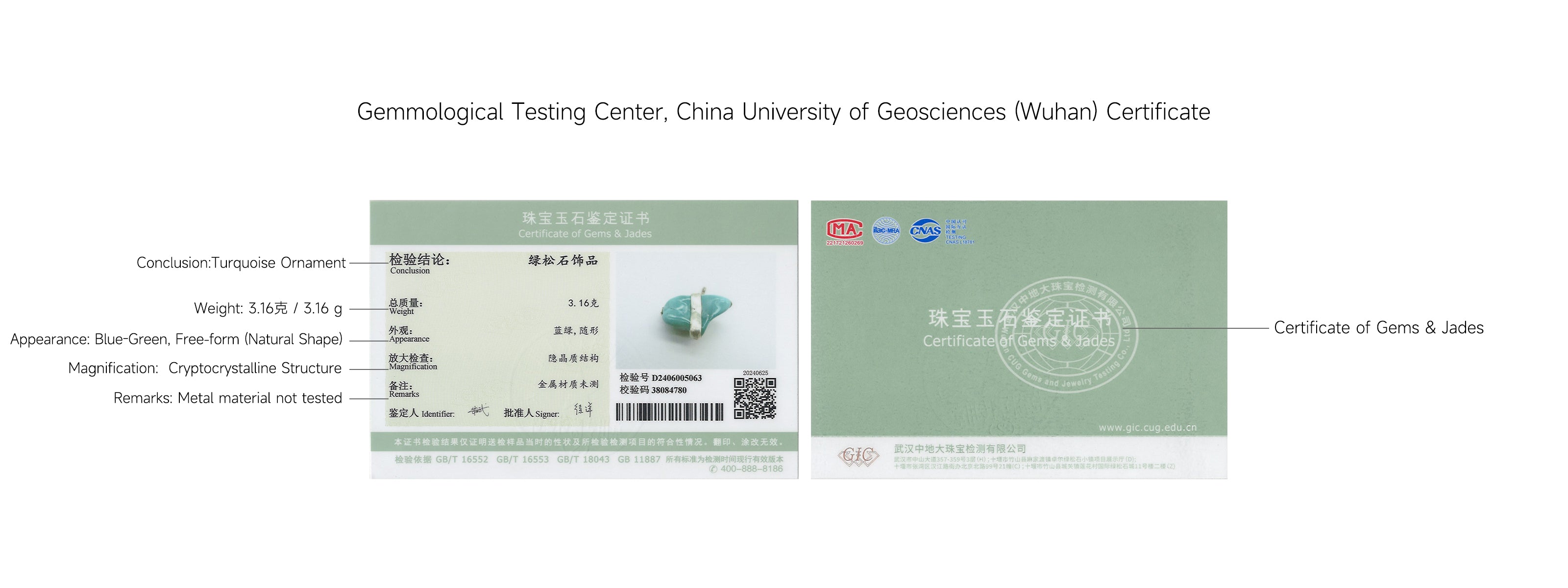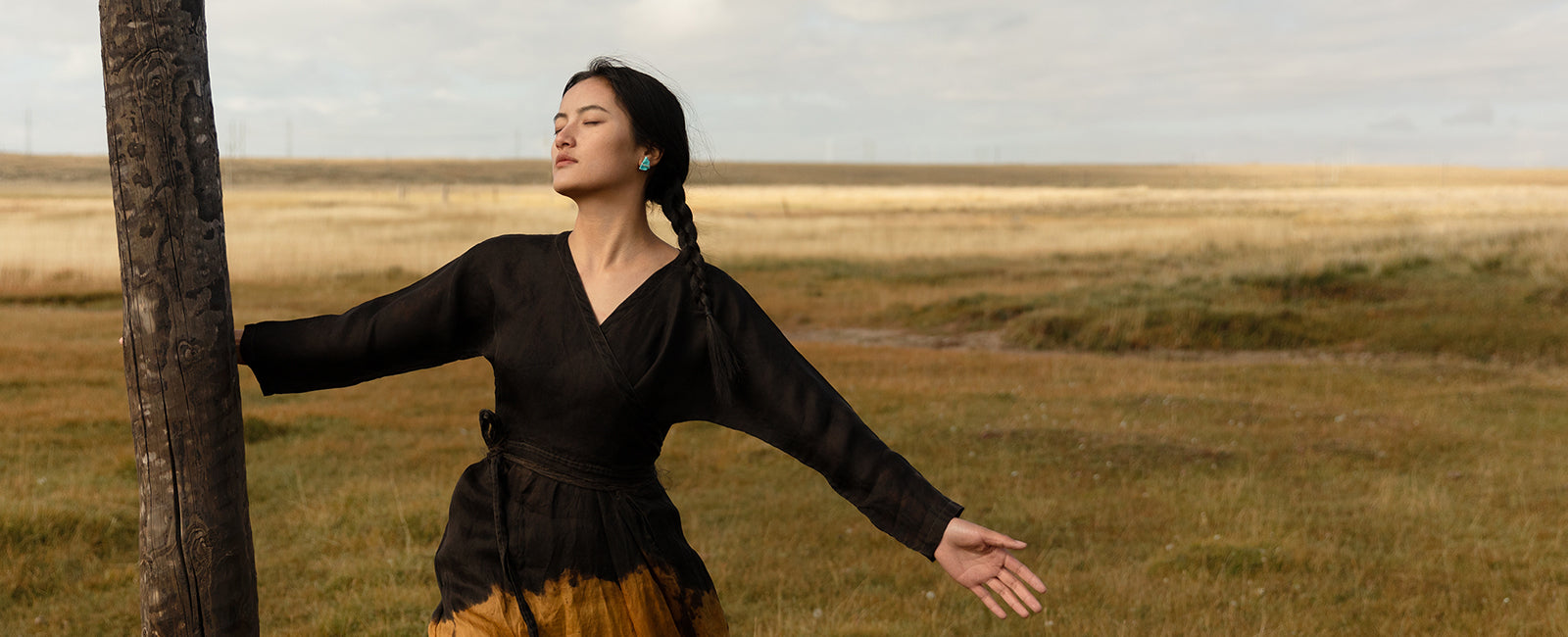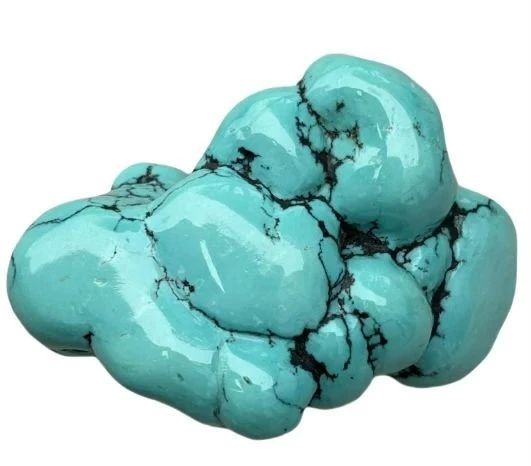
Naturally Perfect
Natural turquoise carries a painterly spectrum of colors—deep azure, pale cerulean, emerald, and golden green—often veined with delicate spiderwebs, drifting mists, and scattered speckles. Born in the ancient depths of stone, it has been shaped by the slow alchemy of shifting earth, mingling minerals, and flowing waters. Across millions of years, turquoise has gathered a quiet energy, a sacred vitality. Each piece holds the wisdom of wilderness—a rare gift bestowed by nature itself.
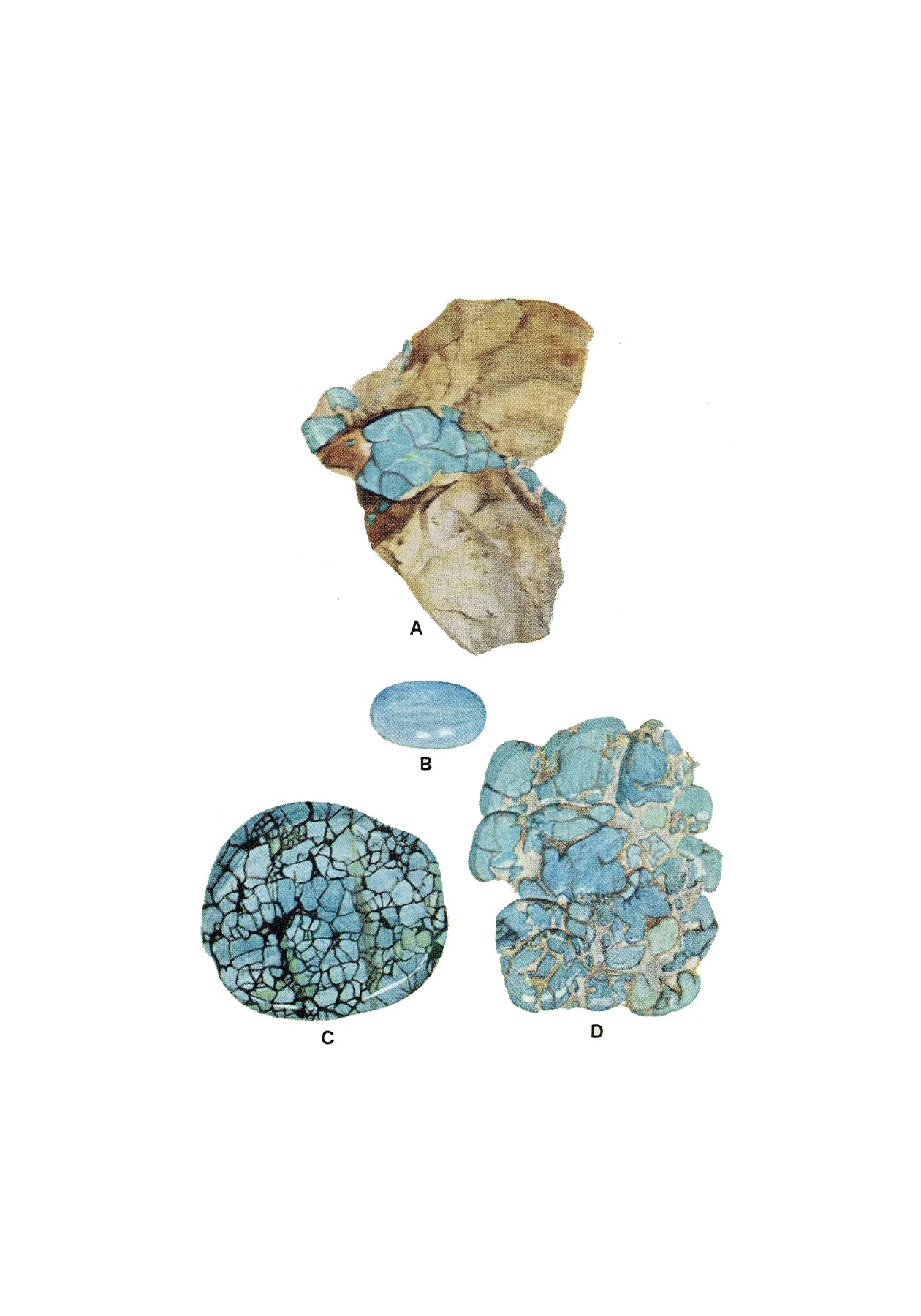
In the 1920s, the British Museum issued educational postcards on minerals and gems, including one featuring Turquoise.
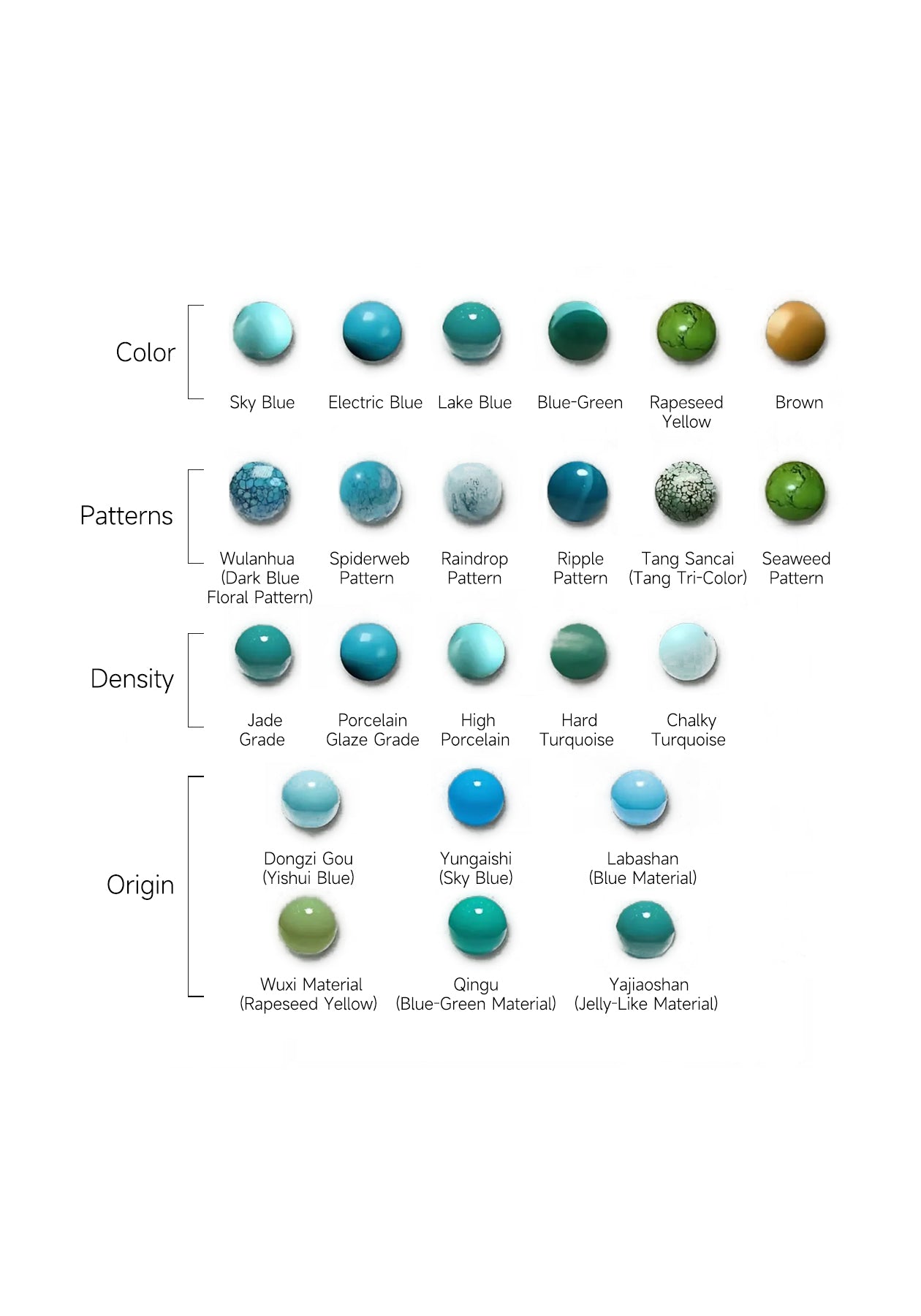
Natural turquoise, shaped by different geological conditions,
often displays irregular iron veining and variations in color.
The Beauty of Irregularity
Turquoise’s shifting colors arise from copper and iron content, the mineral bed, and elemental forces of water and temperature.
Its unique veins emerge through the interplay of minerals, moisture, and pressure—each stone a witness to Earth’s deep evolution.
These naturally formed colors and patterns bestow vivid artistic expressiveness, harmonizing with diverse materials and designs to create breathtaking visual effects.
By contrast, artificially enhanced turquoise—through resin infusion, dyeing, or imitation—cannot rival the beauty and value of natural stone.
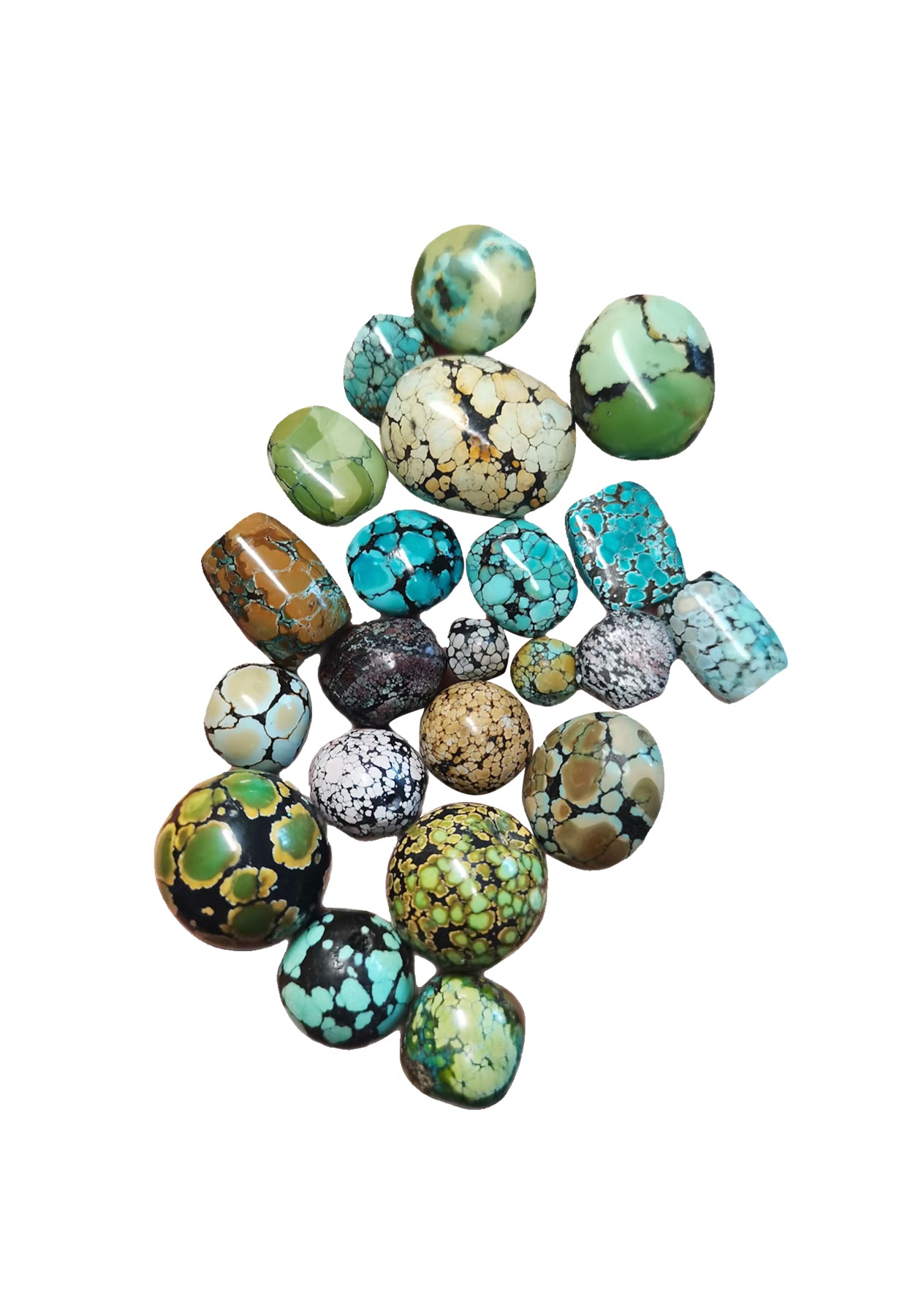
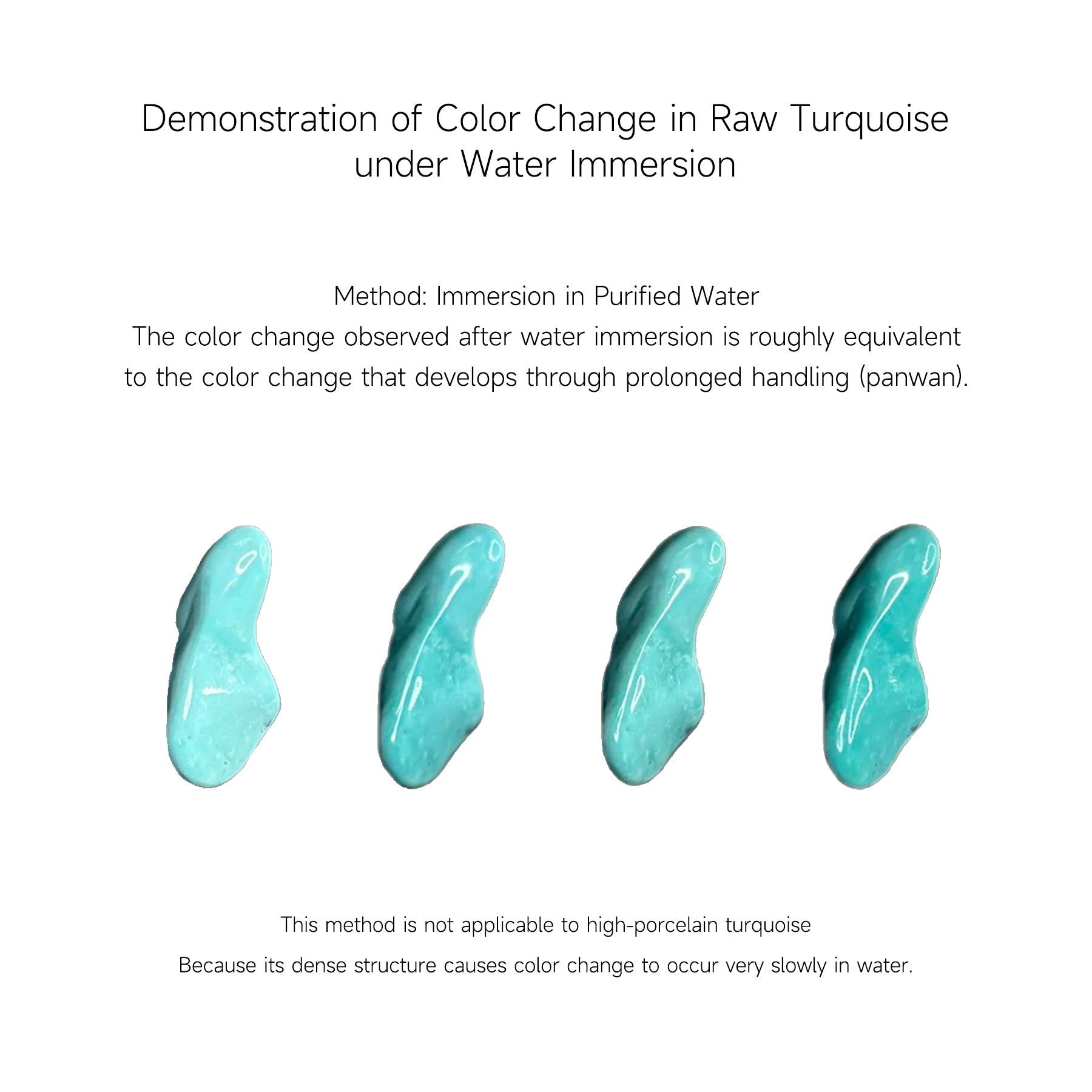
Natural turquoise can resonate energetically with the human body, while chemically treated stones may contain harmful substances and pose health risks if worn long-term.
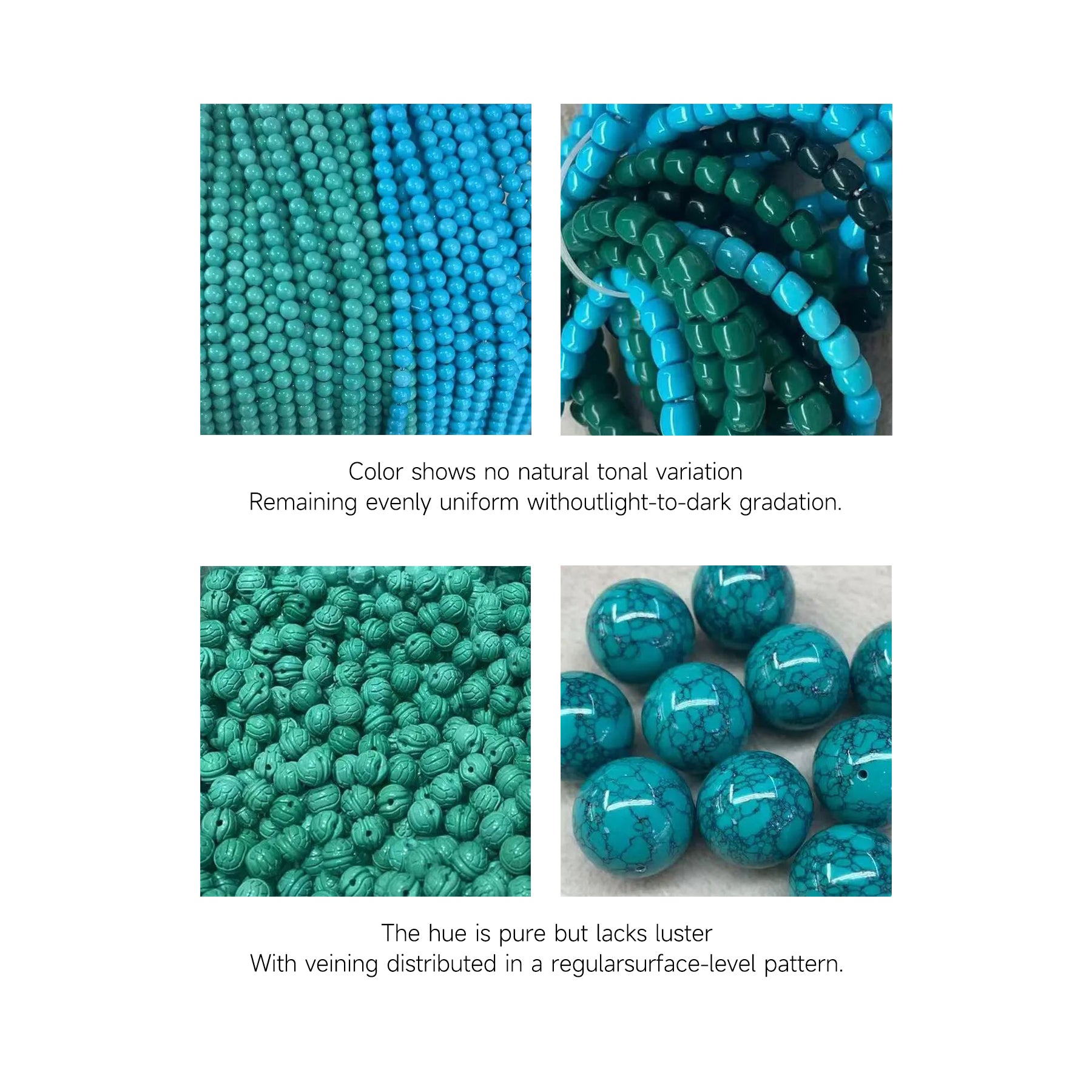
Distinguishing Natural from Treated Turquoise
1. Color and Texture: Natural turquoise shows organic color variations and irregular veins, while treated or imitation stones appear overly uniform and unnaturally bright.
2. Hardness and Density: Natural turquoise is softer—light knife scratches may leave marks. Artificial stones are harder and more resistant to damage.
3. Water Test: Natural turquoise absorbs water and darkens in color; artificial versions are water-resistant.
4. Iron Veins: In natural turquoise, iron lines sink naturally into the surface. In artificial pieces, the lines are unnaturally regular and appear raised.
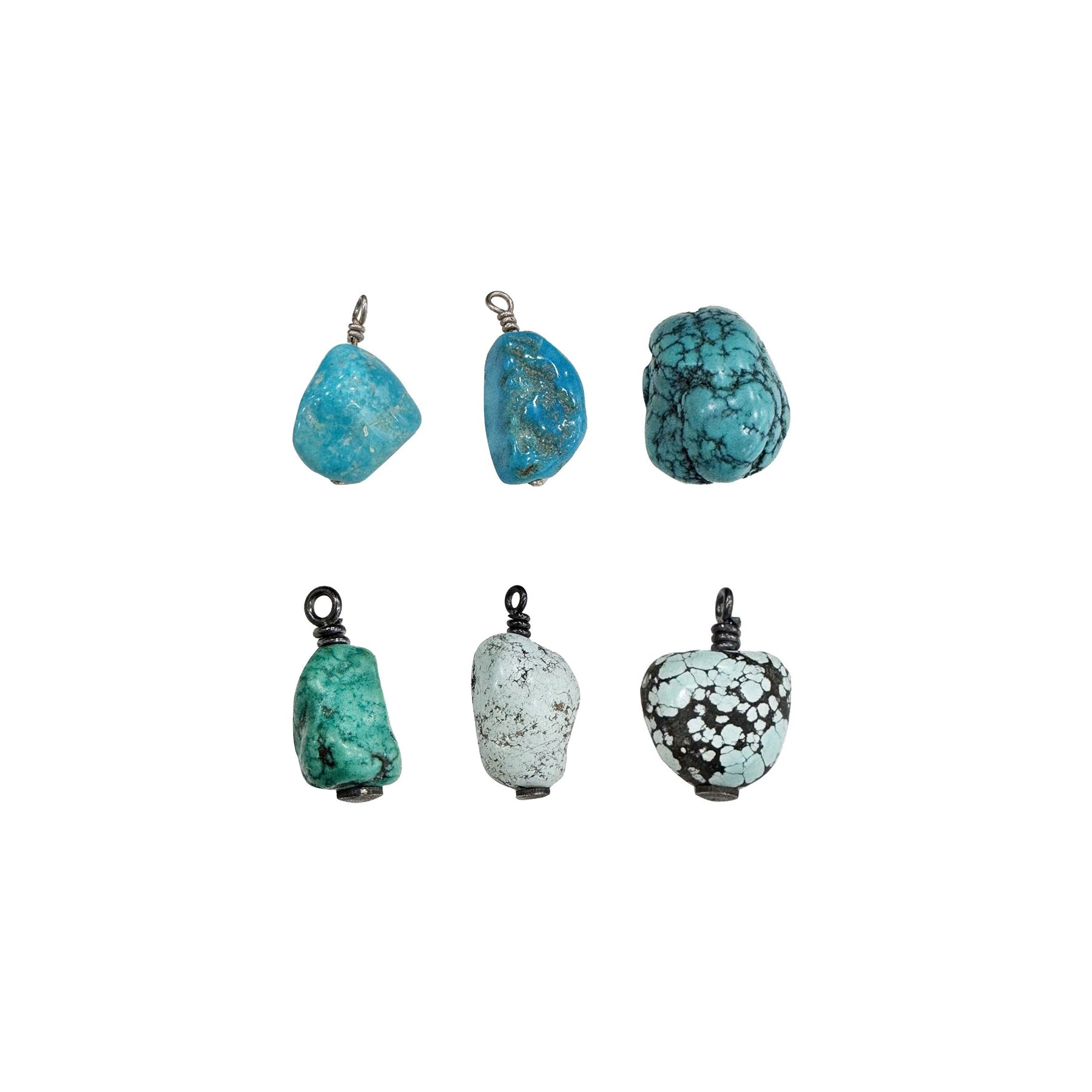
Resin- or dye-treated turquoise: This type of turquoise is produced by injecting colored resin under vacuum pressure to replicate the vibrant, natural hue of high-quality turquoise.
Chalk turquoise: As the name suggests, is of lower quality (low hardness and density).
Resin- or dye-treated turquoise is often made using chalk turquoise as its base.
Grades & Quality
Whether a stone is natural is only the starting threshold. High-grade turquoise must also meet stricter criteria:
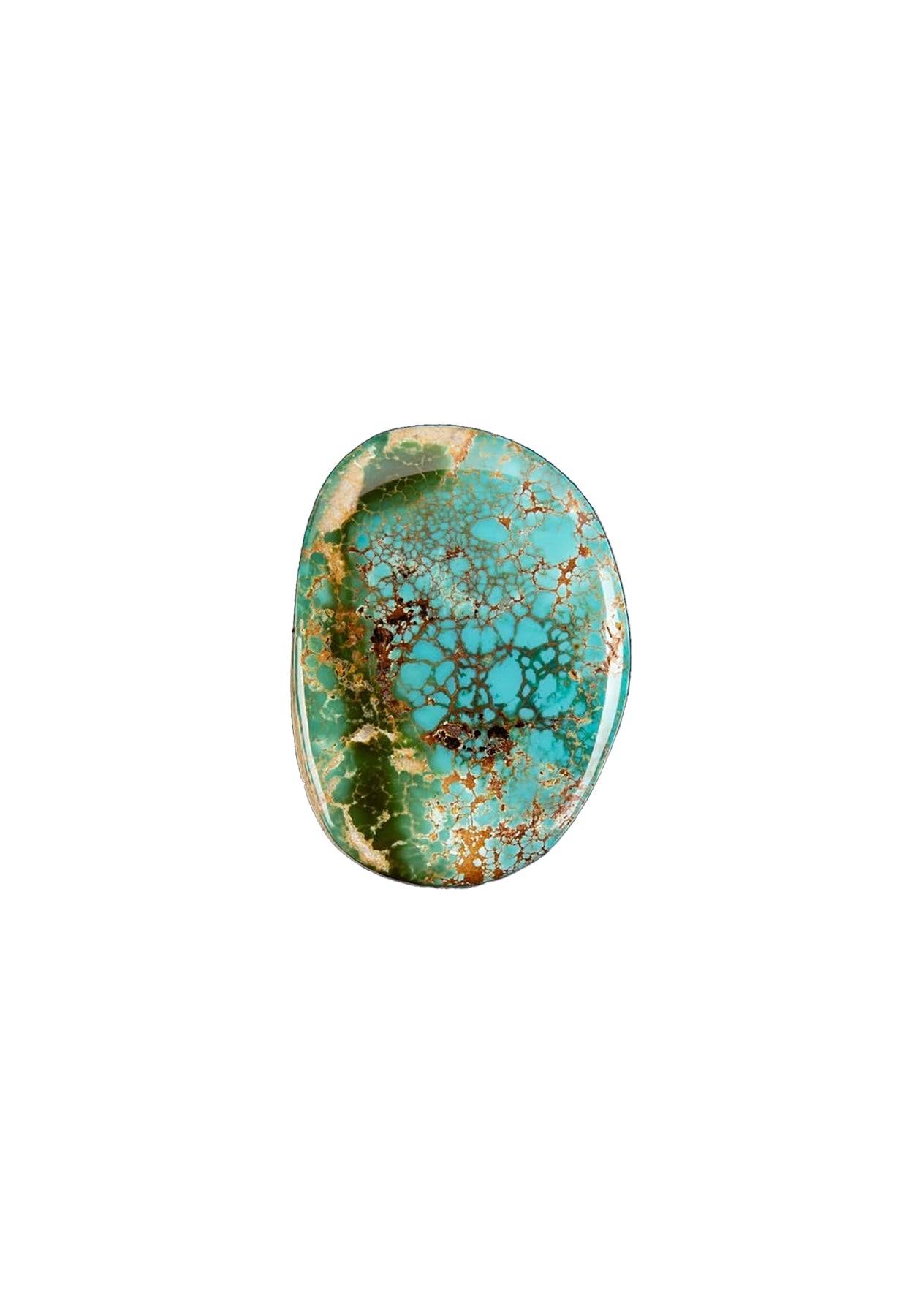
Color
Pure sky-blue or blue-green is most prized; stones with heavy blotches or impurities are less valuable.
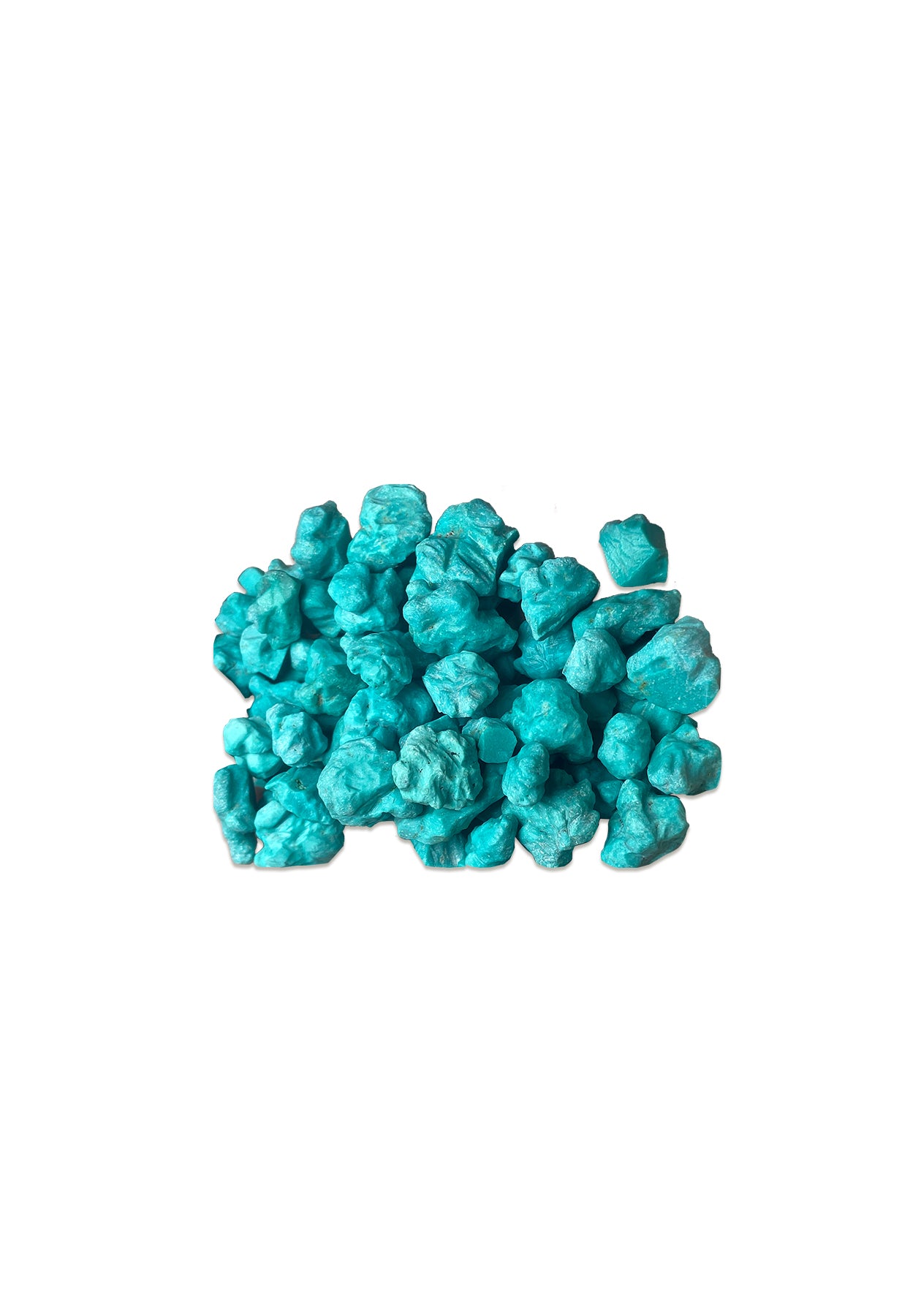
Porcelain Texture (Cizhi)
High “porcelain grade” turquoise (known as yuhua or císōng) is fine-grained with a strong luster; lower-grade varieties (yìngsōng, pàosōng) appear coarse and dull.
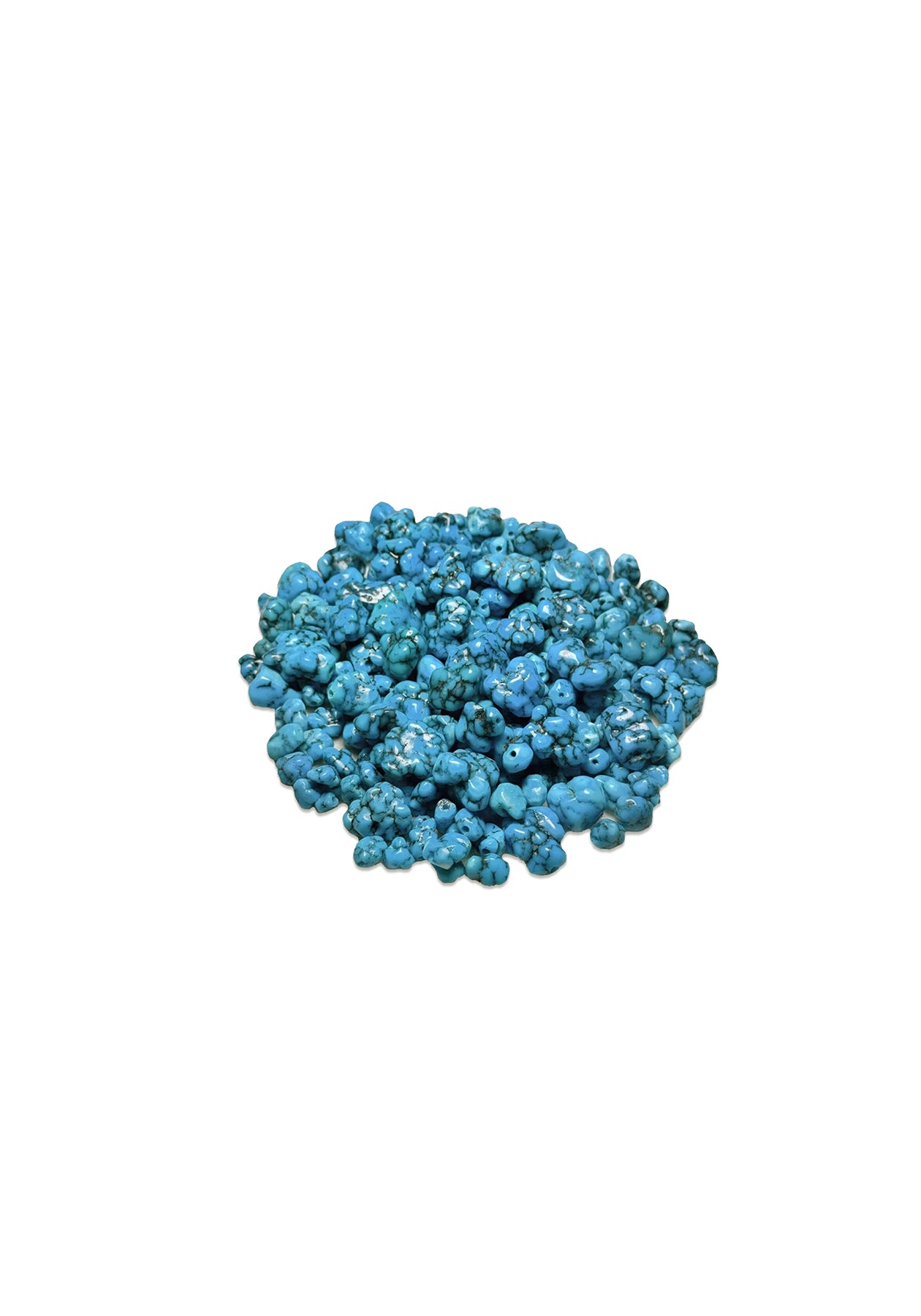
Origin
Turquoise from renowned deposits such as Yungaisi and Dongzigou in Hubei Province is especially precious. With Yungaisi’s resources now exhausted, its turquoise commands exceptional value on today’s market.
Scientific Authentication


